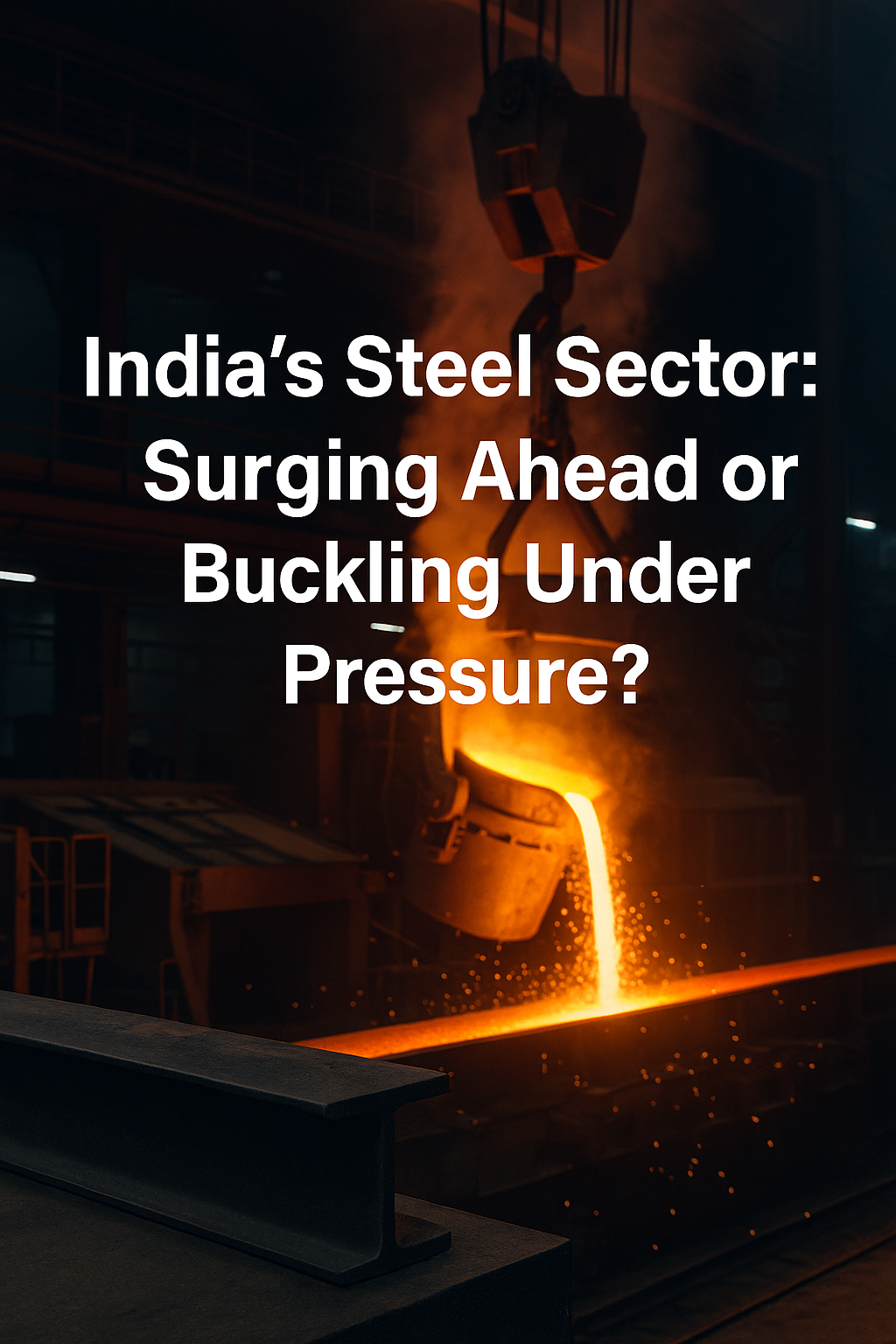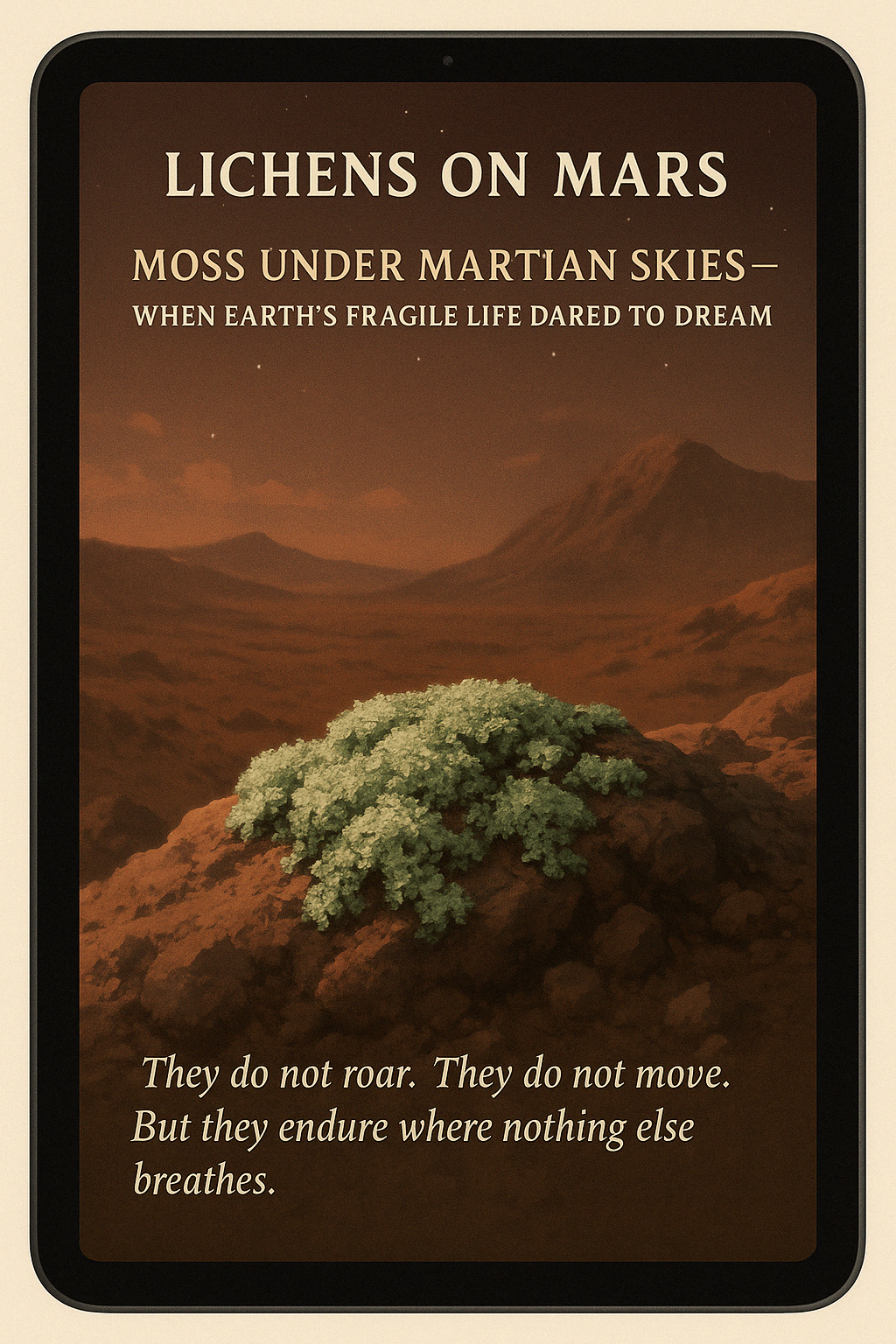
🧭June 22, 2025 Post 2: India’s Steel Sector: Surging Ahead or Buckling Under Pressure? | High Quality Mains Essay: Steel and Sovereignty: India’s Industrial Backbone Amidst Global Flux | For IAS-2026 :Prelims MCQs
India’s Steel Sector: Surging Ahead or Buckling Under Pressure?

NATIONAL HERO — PETAL 002
🗓 Post Date: June 22, 2025
📚 Thematic Focus: GS3 – Economy, Industrial Growth, Trade Policy
🧭 Opening Whisper:
In the furnace of policy and pressure, will Indian steel bend or become unbreakable?
🔹 Key Highlights
- India’s Current Position: Second-largest crude steel producer in the world (144.3 MT in FY 2023-24).
- Trade Imbalance: Became a net importer of finished steel in 2023-24.
- BIS Norm Shock: Ministry extended BIS quality norms to steel inputs and imports abruptly—barely one day’s notice.
- Purvodaya and Policy Push:
- National Steel Policy 2017 targets 300 MT by 2030.
- PLI for Specialty Steel and DMI&SP policy to boost domestic manufacturing.
- Budget 2024-25 Support:
- Zero BCD on ferro-nickel and molybdenum ores.
- Extended scrap duty exemptions.
- Threat from China: Surge in cheap steel imports threatens Indian steelmakers, raising demand for safeguard duties.
- SIMS 2.0 & Quality Orders: Designed to combat sub-standard imports and monitor quality closely.
📘 Concept Explainer
Steel is not just an industrial product—it is a barometer of economic strength. Every bridge built, rail laid, and car manufactured depends on this sector. Yet, in a globally competitive environment dominated by Chinese oversupply, India must walk a tightrope between open trade and self-reliance.
📊 GS Paper Mapping
- GS Paper 3: Indian Economy → Industrial Growth
- GS Paper 3: Effects of Liberalisation on the Economy
- GS Paper 2: Government Policies and Interventions
💭 A Thought Spark — by IAS Monk
“Steel that resists the blow is not always the strongest. Sometimes, the power lies in the heat it endures before it shines.”
High Quality Mains Essay For Practice :
Word Limit 1000-1200
Steel and Sovereignty: India’s Industrial Backbone Amidst Global Flux
Introduction
In the architecture of modern economies, steel is not merely a product — it is the spine. From towering skyscrapers and sprawling rail networks to the tiniest screws in machinery, steel defines the foundational promise of an industrial society. For India, a country striving to leap into the league of global economic powerhouses, the steel industry is both a mirror of its ambitions and a measure of its resilience.
In recent times, especially following the Ministry of Steel’s abrupt extension of the Bureau of Indian Standards (BIS) norms to steel inputs and imports, the sector has been thrust into a new era of regulatory vigilance. At the same time, India’s dual struggle — competing with global giants like China while fortifying its domestic base — places its steel industry at the crossroads of policy, production, and geopolitical shifts.
India’s Steel Saga: A Brief Historical Perspective
India’s tryst with steel began well before independence. The establishment of Tata Steel in Jamshedpur in 1907 marked the dawn of India’s industrial age. Post-independence, public sector undertakings like SAIL became symbols of Nehru’s vision of a modern India powered by heavy industry.
However, it was only post-liberalization in 1991 that India’s steel industry truly entered a competitive arena. With deregulation, increased private participation, and rising domestic demand, India’s steel sector witnessed exponential growth. Over the decades, the transformation from a struggling player to the world’s second-largest steel producer, just behind China, has been nothing short of a national industrial triumph.
Current Status: Strengths and Structural Realities
As of FY 2023–24, India produced 144.3 million tonnes of crude steel, underscoring its rising manufacturing capacity. Yet, paradoxically, India remains a net importer of finished steel — a status that reveals both domestic potential and policy gaps. Imports stood at 8.32 million tonnes, while exports lagged behind at 7.49 million tonnes.
The steel sector currently contributes nearly 2% to India’s GDP, but its importance extends far beyond statistics. It supports infrastructure, defence, construction, railways, automobiles, and even renewable energy — all sectors critical to India’s ambition to become a $5 trillion economy.
The Chinese Challenge and Global Pressures
Perhaps the most significant external threat to India’s steel ecosystem is the tsunami of cheap Chinese steel. China, possessing massive excess production capacity, has adopted aggressive dumping practices, flooding global markets with low-cost steel. This practice distorts global pricing and severely undermines the competitiveness of domestic players in other countries — India being a key target.
Indian manufacturers have long demanded safeguard duties and anti-dumping measures. Without such policy cushions, Indian steel risks being marginalized not because of inefficiency, but due to the asymmetries in global trade practices.
Key Government Initiatives and Policy Response
India’s policy-makers have begun to recognize steel’s centrality to national growth and sovereignty. Key initiatives include:
- National Steel Policy, 2017 – aims to ramp up production to 300 million tonnes by 2030.
- Purvodaya Programme – focuses on transforming eastern India into an integrated steel hub, tapping the region’s rich mineral wealth and infrastructure potential.
- Production Linked Incentive (PLI) Scheme for Specialty Steel – offers incentives to attract investments in high-grade, niche steel varieties, reducing import dependency.
- DMI&SP Policy – ensures government procurement gives preference to domestically produced steel.
- Revamped Steel Import Monitoring System (SIMS 2.0) – ensures real-time visibility of steel import trends.
- BIS Standards Extension (2024) – aims to curb sub-standard imports and ensure quality consistency.
While these are commendable steps, the timing and manner of implementation — as seen in the sudden extension of BIS compliance — have raised concerns. Industry players argue that overnight mandates without transition periods create disruption and confusion rather than clarity.
Structural Challenges and Industry Concerns
Despite India’s steel aspirations, several deep-rooted challenges persist:
- Infrastructural Gaps: High logistics costs and inconsistent supply chains impact the timely delivery of raw materials and finished products.
- Environmental Pressures: Steel is a carbon-intensive industry. India’s decarbonization goals under its climate commitments require cleaner technologies and sustainable production mechanisms.
- Technology Obsolescence: Many secondary producers still rely on outdated technologies with lower energy efficiency.
- Capital-Intensive Nature: Steel plants require massive upfront investment with long gestation periods, deterring small and medium players.
- Import-Export Imbalance: High imports of specialized steel types and ferrous scrap reflect a weak domestic ecosystem for high-end steel production.
The Road Ahead: A Vision of Resilience and Self-Reliance
India’s steel story must now evolve into one of resilient self-reliance, in tune with the broader Atmanirbhar Bharat mission. The following policy and industrial steps are crucial:
- Safeguard Measures: Timely imposition of anti-dumping duties against predatory pricing by foreign players.
- Research and Development: Investment in metallurgical R&D to develop lightweight, corrosion-resistant, and eco-friendly steels.
- Green Steel Revolution: Adoption of hydrogen-based steel production and waste recycling technologies.
- Global Partnerships: Collaborate with Japan, South Korea, and the EU for technology transfer, skill-building, and market access.
- Integrated Infrastructure Corridors: Faster completion of projects like the Eastern and Western Freight Corridors to ease steel transport logistics.
- Workforce Upskilling: Training programmes in advanced metallurgy and digital manufacturing for a future-ready workforce.
India’s Strategic Steel Diplomacy
Beyond domestic policy, steel has become a tool of diplomacy. India’s strategic outreach through trade agreements, collaborations with ASEAN, and its active role in the Global Steel Climate Council can shape fairer global trade norms.
Moreover, as India becomes a key player in infrastructure development in Africa and Southeast Asia, exporting steel and construction materials will boost both global influence and trade balance.
Conclusion: Forging the Future
Steel is not just about iron and carbon — it is about aspiration and strength. As India rises, its steel industry must be forged in the furnace of global competition, technological innovation, and environmental consciousness.
The challenge is steep — Chinese dumping, abrupt policy changes, and structural gaps — but so is the potential. If India aligns its policies with long-term vision, listens to industry voices, and invests in sustainable technologies, it can turn its steel industry into a pillar of sovereignty, employment, and economic might.
As the alloy strengthens under heat and pressure, so too must India — bending but not breaking, refining but not retreating.
🌀 Closing Whisper — by IAS Monk
“When a nation forges its steel with conscience, it shapes more than metal — it shapes destiny.”
Target IAS-26: Daily MCQs :
📌 Prelims Practice MCQs
Topic: India’s Steel Industry
MCQ 1 – Type 1: How many of the above statements are correct?
Q. Consider the following statements regarding India’s Steel Sector:
1. India is the second largest crude steel producer in the world.
2. The Purvodaya scheme aims to create a steel hub in eastern India.
3. The steel sector contributes around 2% to India’s GDP.
4. The Production Linked Incentive (PLI) scheme for Specialty Steel aims to reduce import dependence.
How many of the above statements are correct?
A) Only two
B) Only three
C) All four
D) Only one
🌀 Didn’t get it? Click here (▸) for the Correct Answer & Explanation
✅ Correct Answer: C) All four
🧠 Explanation:
•1) ✅ True – India ranks second globally in crude steel production, after China.
•2) ✅ True – The Purvodaya programme targets an integrated steel hub in eastern India.
•3) ✅ True – The steel sector contributes about 2% to India’s GDP.
•4) ✅ True – The PLI scheme aims to promote specialty steel production and reduce imports.
MCQ 2 – Type 2: Two Statements Based
Q. Consider the following two statements:
1. The National Steel Policy, 2017 aims to achieve 300 million tonnes of production capacity by 2030-31.
2. SIMS 2.0 is a program to monitor the carbon emissions of steel plants across India.
Which of the above statements is/are correct?
A) Only 1 is correct
B) Only 2 is correct
C) Both are correct
D) Neither is correct
🌀 Didn’t get it? Click here (▸) for the Correct Answer & Explanation
✅ Correct Answer: A) Only 1 is correct
🧠 Explanation:
•1) ✅ True – The National Steel Policy, 2017 targets 300 million tonnes of capacity by 2030-31.
•2) ❌ False – SIMS 2.0 (Steel Import Monitoring System) is for monitoring steel imports, not carbon emissions.
MCQ 3 – Type 3: Which of the statements is/are correct?
Q. Which of the following steps have been taken to support India’s steel sector?
1. Extension of BIS quality norms to all steel imports
2. Launch of DMI&SP Policy to encourage domestic procurement
3. Reduction of customs duty on ferrous scrap and molybdenum ores
4. Revocation of the Production Linked Incentive Scheme for steel
Select the correct code:
A) 1, 2, and 3 only
B) 2, 3, and 4 only
C) 1 and 4 only
D) 1, 2, 3, and 4
🌀 Didn’t get it? Click here (▸) for the Correct Answer & Explanation
✅ Correct Answer: A) 1, 2, and 3 only
🧠 Explanation:
•1) ✅ True – BIS quality norms were extended to steel imports recently.
•2) ✅ True – DMI&SP policy promotes use of Made-in-India steel.
•3) ✅ True – Budget 2024-25 reduced customs duty on key steel raw materials.
•4) ❌ False – The PLI scheme for Specialty Steel is active, not revoked.
MCQ 4 – Type 4: Direct Fact
Q. Which of the following correctly describes the Purvodaya Programme?
A) A rail connectivity project for southern India
B) A steel production-linked export promotion scheme
C) An initiative to promote steel manufacturing in eastern India
D) A fiscal subsidy scheme for MSMEs in heavy industries
🌀 Didn’t get it? Click here (▸) for the Correct Answer & Explanation.
✅ Correct Answer: C) An initiative to promote steel manufacturing in eastern India
🧠 Explanation:
•The Purvodaya programme aims to develop eastern India into an integrated steel hub, utilizing the region’s mineral resources and infrastructure potential.

















